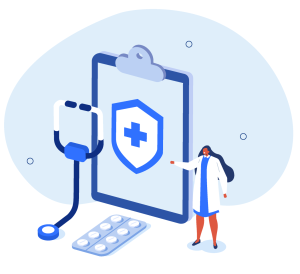Many of us in individual health plans are unable to make a plan change outside of open enrollment. Unless you have a qualifying event, such as a change in family status, a move, or the loss of group health insurance, you may have to wait until open enrollment (November 1, 2015 – January 31, 2016) to make a plan change. While “locked-in” here are some tips on how to improve your health, stay informed and save money:
- Understand your plan benefits as there are four standardized plans in ‘metal’ categories (Bronze, Silver, Gold and Platinum). Understanding the benefits of your ‘metal’ plan will help you analyze plan options when 2016 rate information is released in September.
- Use the power of the internet to research cost saving opportunities. A trip to Redwood city (from Novato) wasn’t really how I wanted to spend my morning, but after researching “open MRIs” online, I found a facility that saved me hundreds of dollars for a higher resolution image over a local one my doctor recommended. In an effort to grab market share, pharmacies are providing savings programs for chronic disease sufferers and are at the forefront of retail clinics that can treat minor ailments with no appointment necessary (CVS has over 900 clinics in 31 states).
- Stay connected with your providers to prepare for the next plan year. Talk with your doctor and staff about their experience and expectations on carrier network participation. A doctor’s billing office manager can be an excellent source of information and are often the most knowledgeable about provider networks and performance. Also, find out if they offer tools for staying connected like online appointments, e-mail access, or other services or resources. The websites of many medical groups now have insurance pages listing covered insurance carriers and plans.
- Read about healthcare delivery breakthroughs during this time of tremendous advancement in healthcare delivery. Relying on traditional methods to solve chronic disease can be time consuming and costly. Communication and data-sharing are the impetus for the surge in innovation and are seen by many as the greatest need for correcting our healthcare system. Some of these include:
– New smartphone apps to track diseases digitally. For example, diabetics can monitor blood glucose readings on their phones and share them with healthcare providers (check out free apps such as Glooko, Fooducate and Diabetic Connect).
– Techy watches are way cool, but they also provide useful tools like pulse counting, calorie counting, and alarms for taking medication or testing blood, sleep monitoring, nutrition support, as well as workout reminders to help reach fitness goals.
– Telehealth or telemedicine options include video conferencing to provide convenience and immediate access to primary care doctors and specialists. Virtual care platforms include Doctors on Demand, TeleDoc, MDLive and Anthem Blue Cross’ LiveHealth Online to name a few.
– Accountable Care Organizations (ACOs) are groups of doctors, hospitals and other care providers who come together to provide team-based care with provider reimbursement tied to quality metrics. Insurance carriers such as Blue Shield and Anthem Blue Cross have added ACO partners in many California counties and offer members this coordinated treatment strategy. Both carriers have reported ACO based care has resulted in higher quality outcomes with overall health care cost savings.
With all your “free time”, there are things you can do to stay informed, improve your health and prepare for next open enrollment.
Phil Dougherty
OnlyHealthInsurance


